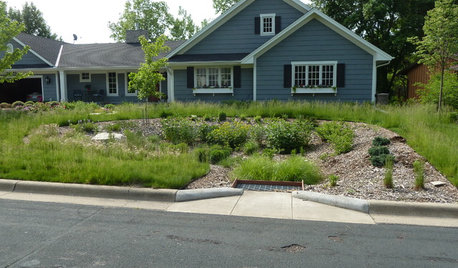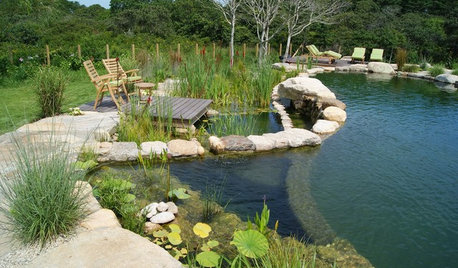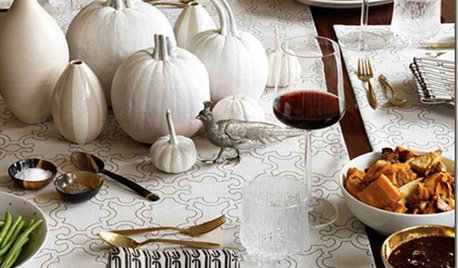Water Hazard --- !!!!!!!!!!
Texas_Green
20 years ago
Related Stories

LANDSCAPE DESIGNHow to Design Your Landscape to Spread Water
Water that’s distributed widely will more readily soak into the ground
Full Story
LANDSCAPE DESIGNSecrets of a Successful Water Garden
Relax. Having a water garden is much easier once you understand the basics
Full Story
GREAT HOME PROJECTSHow to Add a Solar Water Heater
Lower energy bills without a major renovation by putting the sun to work heating your home’s water
Full Story
HEALTHY HOMEHow to Keep Water Vapor From Ruining Your House and Your Health
We help you find out when it’s happening, what it means and how to fix it
Full Story
DISASTER PREP & RECOVERY7 Initial Steps for Dealing With Floodwater Damage
How you handle your flooded home and its contents can affect not only the damage level but also your personal safety
Full Story
GREAT HOME PROJECTSHow to Switch to a Tankless Water Heater
New project for a new year: Swap your conventional heater for an energy-saving model — and don’t be fooled by misinformation
Full Story
PATIO OF THE WEEKWater and Fire Mingle in a Canadian Front Yard
If the illuminated moat winding through this Ontario patio doesn't dazzle you, the 8-foot-wide fireplace will
Full Story
REMODELING GUIDES5 Ways to Protect Yourself When Buying a Fixer-Upper
Hidden hazards can derail your dream of scoring a great deal. Before you plunk down any cash, sit down with this
Full Story
PETSPet-Proofing Your Home: A Room-by-Room Guide
Not all pet dangers are obvious. Keep furry friends safe and sound by handling all of these potential hazards
Full Story
LIFEHow to Keep Your Pets Safe During the Holidays
To avoid an unwanted trip to the vet, be aware of these holiday-related hazards for dogs and cats
Full Story





Ina Plassa_travis
lovetogarden
Related Professionals
La Marque Landscape Architects & Landscape Designers · Matthews Landscape Contractors · Aberdeen Landscape Contractors · Arlington Landscape Contractors · Fuquay-Varina Landscape Contractors · Mashpee Landscape Contractors · Morrisville Landscape Contractors · Glen Avon Solar Energy Systems · Orinda Solar Energy Systems · Payson Solar Energy Systems · Easton Solar Energy Systems · Annapolis Siding & Exteriors · Elizabeth Siding & Exteriors · Farmington Siding & Exteriors · Tooele Siding & Exteriorsaspen178
Bullnettle
ScottReil_GD
dbpdc